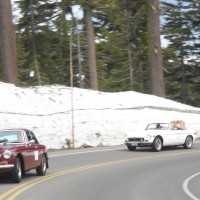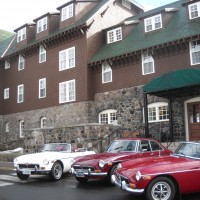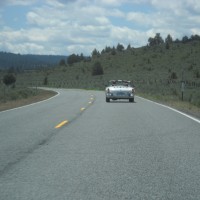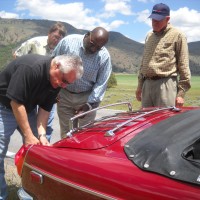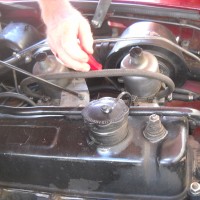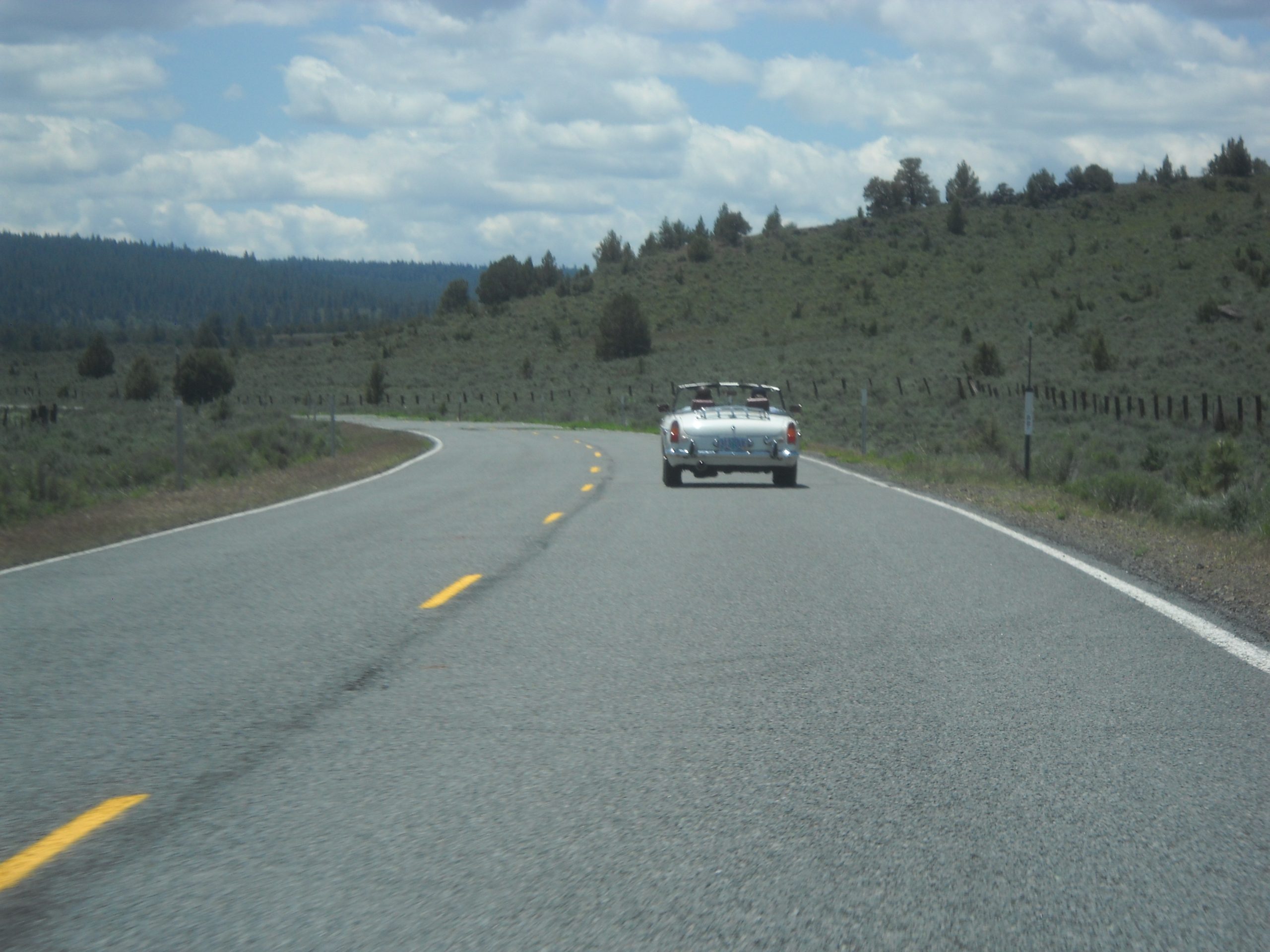
I was giving a talk at the local MG club meeting last Friday evening.
We were discussing road trips, and the SCM “Road to Reno” adventure came up.
In 2011, we bought three 1972-73 MGBs (two convertibles and a GT), refurbished them and drove to Reno for the All-MG Register gathering and then back to Portland.
They performed flawlessly. Someone in the audience mentioned that they had caravanned down with 50 other MGs, and that only a couple of them had had problems.
This is completely different than 25 years ago, when old cars dropped like flies in every rally – especially within the first 50 miles.
We all started talking about how much better maintained and prepared our old cars are today than they were 25 or 35 years ago.
In the 1980s, most MGBs were just ratty used cars. They were bought and used as daily drivers. The engines and clutches were good for about 50,000 miles before something major — and expensive — needed to be done. As the cars were worth $1,000 to $3,000, it simply didn’t make sense to put a lot of money into them.
Many owners who bought a dishelved MGB for $1,500 often didn’t have the money to take the car to a good shop. So, these owners worked on their own cars — often without proper training, tools or experience.
For example, when I was in my “lean-budget” days, I would try to get away with just replacing the clutch disc — but not the pressure plate. If the throwout bearing looked good, I’d leave it in (saving $10 or so). I don’t recall ever checking the pilot-shaft bearing for wear.
My clutch jobs didn’t last very long, but my labor was free, so it seemed to make more economic sense to spend a weekend every year or so slamming in a clutch disc than it did spending the money to do things right — and making the clutch servicing intervals much longer.
Today, our classic sports cars are cosseted and cared for in ways we could never imagine back in the old days. They sit in climate-controlled garages. They rarely go out in the rain. As they aren’t daily drivers, there’s no compelling reason to get them back on the road right away. So, if they sit for a month or so while the right parts are being ordered, it’s no big deal.
Engines are assembled in professional machine shops, and proper clearances are maintained. Line-boring the block and turning or polishing a crank are the norm with overhauls, as are new pistons and rings.
New valves, seats and springs are installed in heads. With the cost of labor hovering between $60 and $125 an hour, it doesn’t make sense not to replace parts “while you are in there” and the engine is already apart.
Our old cars now get what I call “lifetime” fixes. For example, when your starter motor goes bad, if you install a new or properly rebuilt one, chances are it will outlast you. As the car is only driven 3,000 or so miles a year, you simply won’t use the starter enough times to wear it out.
Make Sure It’s Ready for Road Trips
There’s another imperative at work here.
If you go on eight or nine old car events a year, you want to be sure your car is up to snuff when you leave the starting line. There’s nothing more frustrating than planning for weeks for an event, getting your car all packed, then having it fail – or worse, just stumble along – while everyone else is whizzing away.
Keep in mind that when new, these cars were reasonably reliable and performed pretty well. In fact, they were purchased to be used as daily-driver cars — the way someone buys a Miata today. They certainly weren’t “future collectibles” to be treated gingerly.
I have a formula for bringing my old cars “up to speed.” I drive them and make a list of everything, large and small, that is wrong with them. Or maybe something just bothers me.
I then take the car to a shop that is familiar with the model, and I then have everything on the list done. Then I take the car out again and make a new list — if necessary. Then back to the shop. The list gets shorter and shorter until there is nothing on the list. All this is time consuming, but it’s as close as I can get to a guarantee that the car will be in top form and on the button.
Of course, when I’m on a long rally, say 600 to 1,000 miles, the list always grows again! But that’s part of old car ownership.
If you spend the time and money today to bring your car back to “like- new” mechanical condition, chances are very good that your car will be reliable — and be there for you. With old cars, like so many other things in life, success depends on preparation. To have the best possible old car experience, give your old car the best care and feeding — well before you pack up and head for that tour you’ve anticipated for the past six months.
Then you will spend your road time enjoying the company, the cars and the scenery. This is much more fun than waiting for a tow truck. I’ve done tours both ways, and I guarantee driving your own car is much more fun than sitting next to the flat-bed operator as he drags your now-silent car home.
